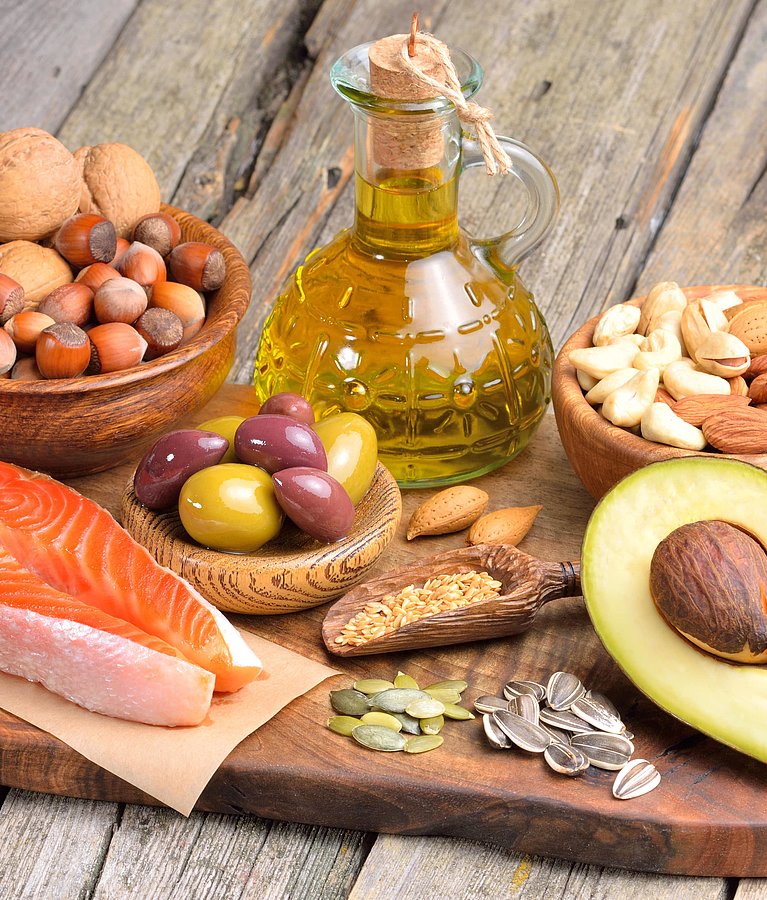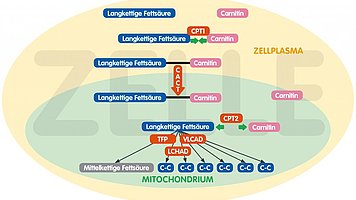

Principles of the disturbances of energy production from long-chain fatty acids
The term "metabolism" encompasses all processes necessary for building the body, maintaining bodily functions, and obtaining energy. To fulfill these tasks, the food ingested or reserves stored in the body are processed in many carefully coordinated steps. These steps are facilitated by enzymes and transporters.
Each step in metabolism requires its own enzyme. If a specific enzyme in the body doesn't function properly, it can lead to a metabolic disorder where the corresponding metabolic step cannot proceed correctly. Due to the numerous different metabolic steps, there are also many different metabolic disorders. The metabolism of fatty acids serves to provide energy for the body and its organs.
Fats and Fatty Acids
Fats consist of glycerol and various fatty acids that are separated from each other during digestion in the intestine. Fats are called triglycerides due to their structure. The type of fatty acids contained in them determines the properties of a fat and its functions in the body. Unsaturated fatty acids, for example, play a role in cell regeneration and immune defense. They are found in large quantities in plant oils, nuts, or fatty fish. The primary function of fat is to provide energy. Fat has the highest energy density and provides approximately twice as many calories as carbohydrates. The body stores fat reserves for times of hunger. Fat is also used as insulation for warmth and serves as a transporter for fat-soluble vitamins. Fatty foods are often more flavorful because many flavor compounds are fat-soluble. The body can obtain fat from two different sources: from food and from fat stored in the body.
How is fat processed and utilized in the body?
The body can break down its own fat reserves and generate energy from them. Certain components of fat, known as essential fatty acids, must be regularly obtained from the diet and are necessary for building all cells and regulating vital processes in the body. Dietary fat typically consists of long-chain fatty acids. These fatty acids can be imagined as chains that are broken down with the help of enzymes to make them available for energy production. Energy obtained from the breakdown of fatty acids is crucial for muscles, especially the heart muscle. Enzymes are natural substances produced by the body that support metabolic functions. Several different enzymes are involved in the breakdown of fatty acids. Each of these enzymes supports a specific step in the breakdown process and has a unique role.
What happens in case of a disruption in energy production from long-chain fatty acids?
When energy production from long-chain fatty acids is impaired, two problems can arise:
-
The body lacks energy from the breakdown of fatty acids. If the body cannot obtain enough energy from fat breakdown, it must primarily rely on stored carbohydrates for energy. Shortly after a meal, the body has sufficient carbohydrate reserves in the liver and muscles. When these reserves are depleted, fat stores need to be used for energy production. However, in the case of a fatty acid oxidation disorder, fat stores cannot be adequately utilized. Consequently, during extended fasting or increased energy demands, an energy deficit may occur. This energy deficit can lead to severe hypoglycemia, particularly endangering the brain. Insufficient energy for muscles can result in muscle cell breakdown, leading to muscle pain and potential issues with the heart muscle.
-
The unprocessed fatty acids accumulate in the body. Long-chain fatty acids are partly bound to the carrier molecule carnitine and excreted in the urine. However, some long-chain fatty acids may accumulate in the body along with carnitine, especially affecting the heart. This accumulation can lead to arrhythmias or impair the heart's pumping function. Additionally, less carnitine becomes available for the body due to this accumulation.
Note: This article is for informational purposes only and does not replace individual medical and dietary advice.



